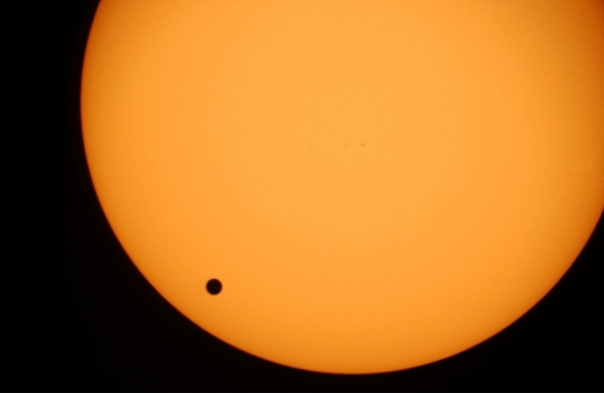Venus is many things. I don’t know much about it besides the fact that it is hot, orange, it’s the second planet in the solar system, and is the goddess of love in Roman mythology.
On June 5th, 2012, a couple of days after I graduated from high school, my dad and I woke up at 5 am and drove to a large parking lot in downtown Beirut. There were local news station vans and minor celebrity figures. The transit of Venus across the face of the sun was the biggest headline that day. My physics teacher was there, too, and he introduced me to Majdi Saadi, an astrophysics professor at the American University of Beirut and scientific personality who I have now grown to liken to a sort of Lebanese Neil deGrasse Tyson – charismatic, cynical, and very passionate about science literacy.
I took off my glasses and pressed my eye into the telescope. The goddess of love looked largely unglamorous, a black dot on the face of the massive sun. But really it represented something – this was a couple of months before I was scheduled to fly out to America for the first time. I was in awe of its insignificance, really. This massive, massive celestial body, a speck in an eyepiece. It was quite lovely, rather akin to Tyson’s cosmic perspective. Bigness and smallness conflating.
“You are the future of science for this country,” Saadi told me as he vigorously shook my hand. “Make us proud.”
I have wanted to be a scientist ever since.

